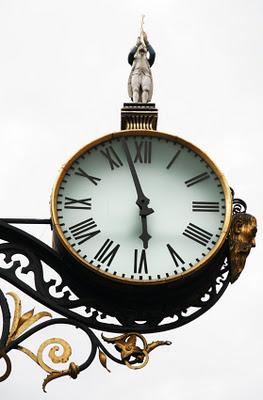
The street facade of St Martin Le Grand Church is dominated by a large clock, topped with the eighteenth-century Little Admiral (although they're currently away for restoration). The clock was replaced in 1855, and later heavily restored after being damaged in a wartime air raid, but the tiny seafarer and his sextant survived all this intact. Nobody knows if he represents any particular admiral, but he has been taking a sighting from the sun since the 1770s.
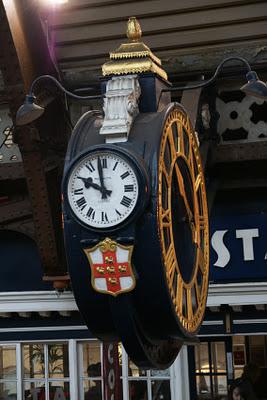
Given the importance of the railways to York, it's not surprising that a rather fine clock was erected in the station. It has been restored, and after some problems with an outbreak of spikes is now looking very handsome. I particularly like the small clock face on its side, ideally placed for those crossing the footbridge between platforms.
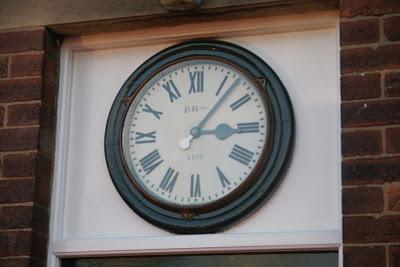
Much more modest is this British Rail clock, hanging above the doorway of a building now used as the National Rail Museum Friends' Office.
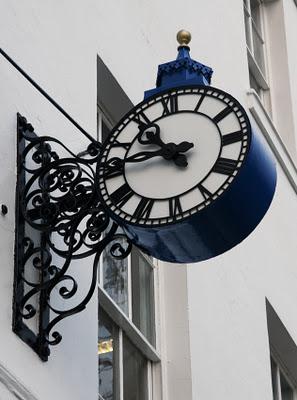
In the 1840s, an officers' mess was built for the Yorkshire Hussars. The De Grey Rooms went on to have various social uses, and are now occupied by York Theatre Royal. However, dances continue to be held in the ballroom; guests can check that they are fashionably late with a glance at this colourful clock. It was made by George Newey in 1906, as part of an exhibition for the British Association for the Advancement of Science conference, and afterwards hung in High Petergate before moving to its current location. Newey's grandson Geoff still looks after the clock. He also cares for other notable clocks in the city, and restored the Little Admiral clock in the 1960s.
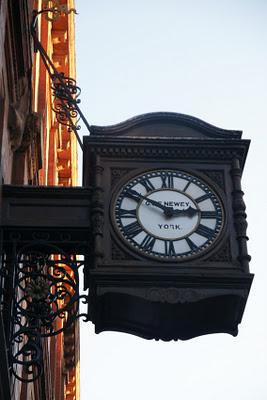
Here's another Newey clock, near the station. While the swirling brackets first catch the eye, the carved case holds the attention.
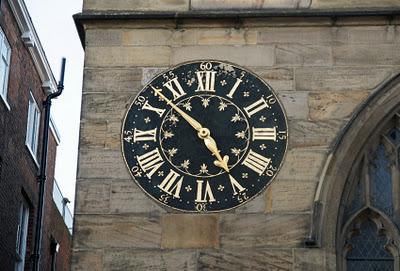
After the elaborate brackets and housing of so many clocks, this one is striking for its relatively modest profile. The face, with its gilt flourishes, is set directly into the wall of St Michael's, Spurriergate (now the Spurriergate Centre).

